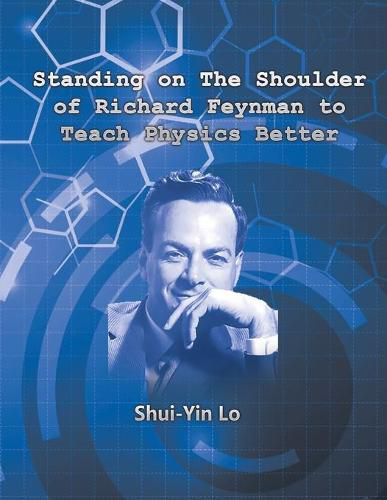Readings Newsletter
Become a Readings Member to make your shopping experience even easier.
Sign in or sign up for free!
You’re not far away from qualifying for FREE standard shipping within Australia
You’ve qualified for FREE standard shipping within Australia
The cart is loading…






This title is printed to order. This book may have been self-published. If so, we cannot guarantee the quality of the content. In the main most books will have gone through the editing process however some may not. We therefore suggest that you be aware of this before ordering this book. If in doubt check either the author or publisher’s details as we are unable to accept any returns unless they are faulty. Please contact us if you have any questions.
Richard Feynman gave his two years undergraduate physics in Caltech in a completely new way from the traditional undergraduate physics course in early nineteen sixties.
Now it is fifty years after Feynman gave his famous Lecture on Physics. It is time to present a completely new way of teaching physics. Feynman said, We prefer to take first the complete laws…… opposite to the historical approach . We follow what he said, and present complete laws of physics: quantum field theory right from the beginning in a way that any first year undergraduate in science and engineering can follow.
As Feynman said many times in his lectures physics is not mathematics. The most important crucial physics should be taught with minimum mathematics. Mathematics are used only when it is absolutely necessary.
The quantum field theory is presented with minimum mathematics simply as seven frameworks, which we denote as QF1, QF2, QF3, QF4, QF5, QF6, and QF7. Or in short,1,2,3,4,5,6, 7,
The most fundamental property of matter is probability (QF1), and the second fundamental property is quantum duality (QF2) . There are three and only three ways to influence the motion of matter (QF3). Four macroscopic variables (QF4), and five fundamental variables (QF 5) are used describe matter. There are six Symmetries (QF6) and finally the action principle S (QF7)
In part I, we use this quantum framework to formulate classical physics. In part II we use this quantum framework to explain our daily activity, as our daily activity is also governed by quantum physics.
20 60 ,
,
,
,
:
,……
,
:
,
,
,
,
,
QF1,QF2,QF3,QF4,QF5,QF6 QF7
,1,2,3,4,5,6,7
(QF1),
(QF2)
,
(QF3)
(QF4)
(QF5)
(QF6),
S(QF7)
,
,
,
$9.00 standard shipping within Australia
FREE standard shipping within Australia for orders over $100.00
Express & International shipping calculated at checkout
This title is printed to order. This book may have been self-published. If so, we cannot guarantee the quality of the content. In the main most books will have gone through the editing process however some may not. We therefore suggest that you be aware of this before ordering this book. If in doubt check either the author or publisher’s details as we are unable to accept any returns unless they are faulty. Please contact us if you have any questions.
Richard Feynman gave his two years undergraduate physics in Caltech in a completely new way from the traditional undergraduate physics course in early nineteen sixties.
Now it is fifty years after Feynman gave his famous Lecture on Physics. It is time to present a completely new way of teaching physics. Feynman said, We prefer to take first the complete laws…… opposite to the historical approach . We follow what he said, and present complete laws of physics: quantum field theory right from the beginning in a way that any first year undergraduate in science and engineering can follow.
As Feynman said many times in his lectures physics is not mathematics. The most important crucial physics should be taught with minimum mathematics. Mathematics are used only when it is absolutely necessary.
The quantum field theory is presented with minimum mathematics simply as seven frameworks, which we denote as QF1, QF2, QF3, QF4, QF5, QF6, and QF7. Or in short,1,2,3,4,5,6, 7,
The most fundamental property of matter is probability (QF1), and the second fundamental property is quantum duality (QF2) . There are three and only three ways to influence the motion of matter (QF3). Four macroscopic variables (QF4), and five fundamental variables (QF 5) are used describe matter. There are six Symmetries (QF6) and finally the action principle S (QF7)
In part I, we use this quantum framework to formulate classical physics. In part II we use this quantum framework to explain our daily activity, as our daily activity is also governed by quantum physics.
20 60 ,
,
,
,
:
,……
,
:
,
,
,
,
,
QF1,QF2,QF3,QF4,QF5,QF6 QF7
,1,2,3,4,5,6,7
(QF1),
(QF2)
,
(QF3)
(QF4)
(QF5)
(QF6),
S(QF7)
,
,
,